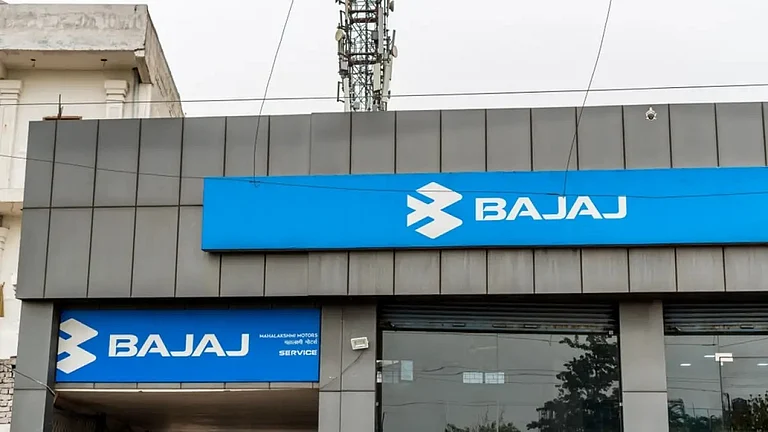
Bajaj Auto reported a 14% YoY jump in net profit to ₹2,210 crore, but domestic sales fell 8% even as exports surged 16%.
While Bernstein and CLSA remain largely bullish, some caution persists over muted domestic demand, KTM drag, and EV production issues.
Supply disruptions from China have slashed Chetak EV production, while Bajaj eyes growth in exports and its upcoming entry into the e-rickshaw market.
Shares of Bajaj Auto traded volatile on August 7, slipping nearly 4% in early trade before recouping losses to turn positive. The stock’s nervous dance came after the company reported a 14% year-on-year rise in consolidated net profit to ₹2,210.44 crore for the June quarter, alongside a 10% jump in revenue to ₹13,133.35 crore.
The headline numbers were solid, but not without caveats. While total sales volumes inched up 1%, thanks to a rebound in exports, domestic sales fell 8%, bogging down sentiment. The company sold 11.11 lakh units in Q1 FY26, with exports rising 16%, led by a strong showing in Latin American and ASEAN markets. Two-wheeler exports rose 14%, and commercial vehicle exports surged 32%.
While brokerages remain largely constructive on the stock, they also flag some key risks. Bernstein maintained its ‘outperform’ rating with a target price of ₹11,000, citing Bajaj’s diversified portfolio and strong downside protection amid demand volatility. It commended the company’s multi-pronged strategy, including a growing premium segment, a balanced powertrain offering, and a robust export engine.
CLSA also echoed a positive tone but trimmed its target to ₹9,971, flagging slightly lower export growth forecasts compared to the company’s guidance. While Bajaj expects 15–20% growth in two-wheeler exports this year, CLSA sees it closer to 10%, while noting a pick-up in momentum.
However, challenges persist. Electric vehicle (EV) production has taken a hit, with the company slashing output of its Chetak electric scooters by 50% due to a shortage of heavy rare earth magnets due to the fallout from China suspending exports of the critical component since April. The disruption is expected to continue well into August and September, clouding short-term EV prospects.
On the three-wheeler front, Nuvama Institutional Equities sees brighter skies, projecting 16% CAGR growth in exports over FY25–28, aided by low base effects and improved demand. Domestically, growth is expected to be marginal at 3%. Bajaj’s upcoming foray into the e-rickshaw segment in August 2025 could also open a new avenue of growth, with a sizeable addressable market of 40,000 units per month, Nuvama wrote.
Meanwhile, YES Securities held a ‘neutral’ stance, acknowledging improved profitability in the EV vertical and its financial services arm Bajaj Auto Consumer Lending (BACL). Still, the brokerage flagged concerns around market share erosion in the domestic 125cc+ motorcycle segment and an uncertain turnaround in KTM operations. Its target price stands at ₹9,035.
With the stock currently trading at around 24.2x its expected FY26 earnings, much of the good news appears baked in, YES Securities believes. Rounding that up, while the consensus sees Bajaj Auto as a steady performer with multiple levers for growth, most believe a stronger re-rating trigger is needed to propel its shares higher.






























